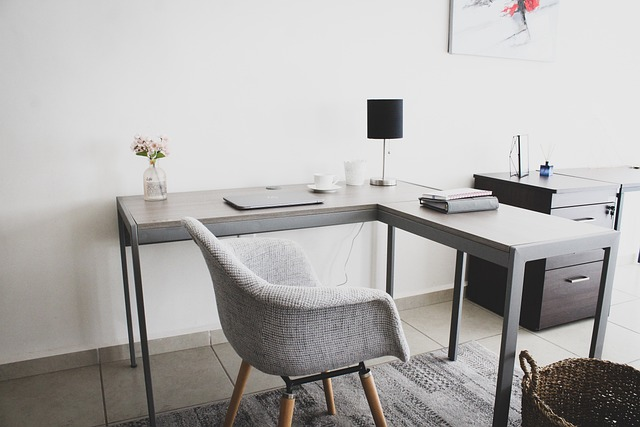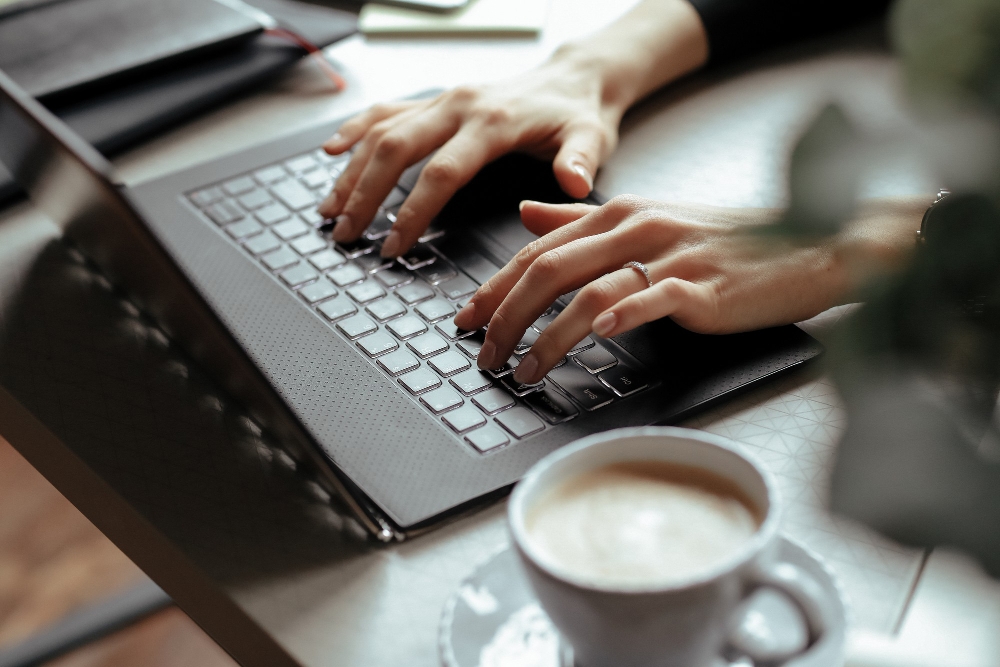When working from the office, there are many distractions that can hinder your productivity and time management. You may occasionally become distracted from your current task by notifications from your social media accounts or sometimes other employees will drop by for a lengthier conversation than you would like. All of these distractions are something you will encounter in an office setting, but a home office design creates a whole different atmosphere.
Remote work has several advantages, such as not having to commute, having greater flexibility, and being able to wear pajamas while still seeming professional from the waist up on a Zoom call. However, there are even more distractions that prevent people to stay productive and achieve work-life balance. This includes family members, housework, entertainment options, and more. It also means you do not have the luxury of starting your job with a commercial office space already furnished for you.
Whether you work remotely or you are an entrepreneur working outside of your home, you can position yourself for success and ensure you are both happy and comfortable in your work environment.

Here are 10 tips on how to make your home office better that can help you be as creative and productive as possible.
1. Create a Dedicated Space
Whether you live in a large house and lot or a small apartment, it is crucial to set aside a space for work that is separate from your “home life.” Having a separate room as your home office is fantastic, but even having a standing desk, or designated spot at the kitchen table for work-related activities is also a great idea.
You will feel more like you are “going” to work each day if you do this, even though it is only a few steps from your bed! You will also notice an increase in attention and overall productivity when you are working rather than simply lazing around the house.
2. Let There Be Light
If you rely on natural light to illuminate your home office, your productivity may be impacted in ways you weren’t previously aware of. Natural light fluctuates throughout long hours of the day, therefore, desk lighting might assist you to disengage from your surroundings and minimize distractions, so that you can concentrate solely on the task at hand.
Your workstation, where you will be spending 40 or more hours a week while working remotely, deserves mood lighting just as much as your leisure time does. However, you don’t want your home office setup to be so bright that it strains your eyes and makes it difficult for you to see the computer screen. Additionally, you do not want it to be so dim that it would be difficult for you to see what you are attempting to look at.
3. Keep Your Workspace Clean
Most individuals would agree that a busy environment contributes to creating a cluttered mind. Simply put, having clutter around your home workspace can have a variety of effects, from distracting to outright irritating for some.
Treat your desk the same way you would if you shared a desk in an office. Make sure there are not any laundry or dish heaps sitting around. Create enough space for bills and other work-related paperwork and stuff.
Clear it up at the end of each workday or during your weekly home maintenance and cleaning. In addition to cleaning or organizing your workstation every day, avoid wasting time at the start of your job and sit down at the end of the day and create a to-do list of the other things you need to complete the following day.
4. Use Color Psychology
Boxy beige furniture and bare white walls of the 90s are a thing of the past when it comes to office design. Today, we are much more aware of the impact that color has on our emotions, thoughts, and actions. While using neutral colors to decorate any interior space will always be a safe decision, you ought to think about sprinkling a little color here and there across your home office.
For instance, earthy hues like green and blue are said to promote relaxation, reduce stress, increase productivity, and stimulate intellectual thought. These colors are excellent if you work in a profession that might be stressful and necessitates prolonged periods of focus.
You can also give your desk a touch of your personality. Use your imagination to make vibrant color combinations that appeal to your aesthetic sensibility. Utilizing vibrant colors will also improve the natural lighting in the space and create a cheery, upbeat atmosphere.
5. Consider Home Office Ergonomics
Safety, comfort, ease of use, productivity and performance, and aesthetics are the five facets of ergonomics. In an office context, the goal is to optimize the employee’s performance in the workplace. You won’t feel as creative or as productive as you can be if you are in pain or uncomfortable. Thus, a comfortable chair and the right desk arrangement are essential.
You can compare these standards with practical and aesthetically pleasing furnishings and décor to achieve an ergonomic workspace. An attractive standing desk or chair, for example, might not be the best choice for your own workstation from an ergonomic standpoint if the height cannot be changed to prevent muscular strain and assure your long-term comfort.
Here are a few ergonomic tips to take into account for your work space:
- Your screen should ideally be at eye level and roughly 75 centimeters away from your face.
- To avoid eye strain, place your desktop computer at least an arm’s length away.
- Avoid putting your computer monitor in front of windows to reduce screen glare.
- The lumbar support of your home office chair should be adjusted so that your weight is equally distributed throughout the seat.
- Avoid leaning forward when working, maintain your head directly above your neck, and keep your chair as near to your desk as you can.
- Your feet should be flat on the floor while your hands and wrists are slightly slanted downwards while you are typing. If you can’t reach it, think about obtaining a footrest under the desk or lowering your chair.
Also Read: Ergonomics: What is it and Why Does it Matter?
6. Bring the Outdoors Inside
Humans have an innate yearning to connect with nature, which is why we often go outside for fresh air when we need to unwind or recharge. If you can position your home office near the windows with a view of the outside, you will feel better when you spend the entire day indoors.
This is the goal of biophilic design, wherein it can boost output, facilitate movement, and create a more pleasant environment. Think about hanging some images of nature or beautiful landscapes that you enjoy gazing at.
Additionally, indoor plants are really popular right now, so even if you don’t think you have a green thumb, having greenery around you will improve your mood and boost your creativity and productivity.
7. Be Equipped with Home Office Equipment
Having the necessary technology is one of the major barriers to having a perfect home office space. Depending on the demands of your job, this may involve a headset, numerous monitors, a home office printer, or a copier/scanner.
Having the computer programs required to complete and manage your work is also crucial. You may frequently discover free or inexpensive alternatives if you are on a tight budget and do not have access to all the products you would ideally like, so do your research.
While technology can keep you focused, it can also be a major source of distraction. Put your electronics in a drawer for safekeeping, as they say, “out of sight, out of mind.”
Also Read: 10 Things Your Home Office Needs
8. Control the Noise Level
If you have the budget, you can purchase soundproofing material to apply to your walls if you are the type of person who is easily distracted by noise. An alternative option is to invest in a pair of noise-canceling headphones.
You will be less agitated and have lower stress levels when working if there is fewer distractions and less background noise. Additionally, it will prevent interruptions during conference conversations.
9. Enter a Goldilocks Zone
The temperature and air quality in a room are crucial elements in creating a personal space to stay focused, much as the significance of comfort from an ergonomic perspective.
If it’s too cold or too hot, you will feel uneasy, distracted, drowsy, and perhaps even ill. Finding a balance between the right heating and cooling is essential, and once it is done, it will probably also improve your Bria Home’s general comfort.
10. Have Enough Storage
While working from home, you will have to deal with a ton of paperwork. Therefore, a well-designed office should have a storage area for your documents. Everything you require ought to be easily accessible without adding to the clutter. For additional office materials, you should have a separate storage space.
Written by Gianne D. Inumerable





